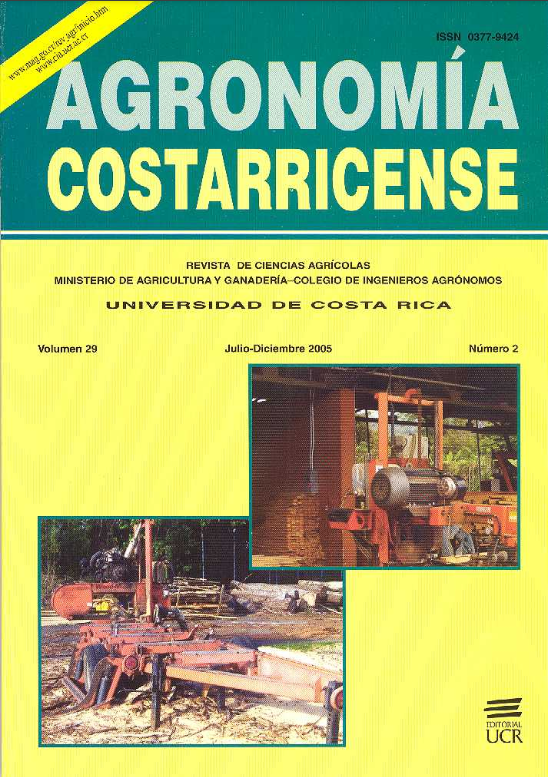Abstract
In order to determine the physical yield or the lumber recovery factor in different phases of the sawn primary wood processing, the timber volume of small-dimension logs and the lumber products volume were cubed. A total of 416 logs were used, from 3 young forestry plantations in their first commercial harvest. The study included 294 logs of melina (Gmelina arborea), 97 of acacia (Acacia mangium), and 25 of terminalia (Terminalia ivorensis), with timber volumes corresponding to 23, 11 and 7 m3, respectively. The acacia and terminalia timber was obtained from an intermediate cut made in January 2003, in a 6-year old forestry plantation in “La Tite” farm, at La Luisa de Pocosol, San Carlos. The melina logs were obtained from a refinement harvest, practiced in a 8-year old forestry plantation, in Río Grande de Paquera, Puntarenas. The physical yield was estimated as the quotient between the total lumber products volume and its corresponding total timber log volume. Among the phases of the wood industrial primary processing, the sawn, resawn, cut of end sections, and planning were included in this study. The physical yields determined for melina, acacia and terminalia were 39, 30 and 27%, respectively. The greatest loss percentage in wood volume was registered in the stage of primary log breakdown (sawn). It represents an average of 51% of the timber log volume.
##plugins.facebook.comentarios##

This work is licensed under a Creative Commons Attribution-NonCommercial-NoDerivatives 4.0 International License.
Copyright (c) 2024 Agronomía Costarricense


